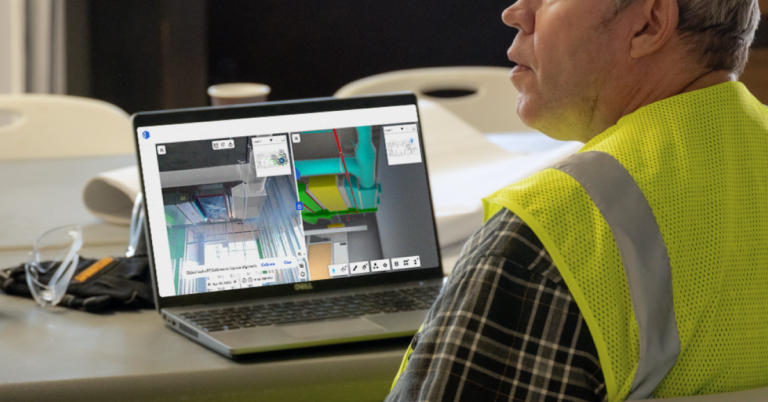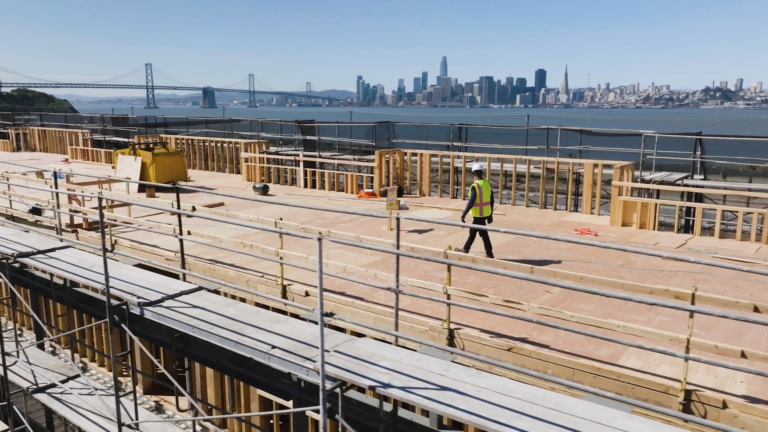General contractors need a reliable record of how work is progressing from week to week—or even day to day—so they can stay on schedule and keep costs in check. But despite the proliferation of technology on construction sites, many GCs are still handling progress tracking with a manual process.
For example, a Project Engineer, armed with a clipboard and the floor plan, walks the site and uses a highlighter to note where framing and electrical wiring have been completed. She might also have a tape measure to determine how many linear feet of drywall have been installed. When she is finished, those pieces of paper are taken to a desk so that someone can input the data into Excel—which is finally uploaded into scheduling software like Primavera P6.
This manual process is highly error-prone, which can lead to inaccuracies in scheduling that disrupt workflow and result in delays. It is also highly time-consuming for the Project Engineer, especially when done on a daily basis. Last but not least, this manual process can lead to discrepancies with payments and invoices if subcontractors are not careful or if the progress record isn’t reliable.
Below we look at the three main areas where problems with progress tracking can have serious implications for the entire project:
1. Scheduling
On a large, complex project, scheduling software like Primavera P6 can contain more than 10,000 individual items, which Superintendents are usually responsible for updating. Sometimes Project Engineers note whether an activity is completed or mark the percentage complete on an iPad, but in many cases, the process is undertaken manually on paper. Since scheduling relies on proper sequencing and accounting for contingencies, the likelihood of errors grows in proportion to the size and complexity of the project.
Scheduling failures caused by spotty, manual project tracking can lead to many types of disruptions. For starters, if a sub shows up ready to work but the job site isn’t ready for them, they’ll still expect to be paid. Workers might come in with the expectation that they’ll install conduits, only to find out that the framing hasn’t been put in yet. Budgets can spiral out of control due to unforeseen costs of this nature. Then the work that’s completed doesn’t match the budget expenditure.
2. Payments to Subs
No GC wants to be seen as a “pass-through contractor” who simply passes along subcontractors’ estimates of how much material has been installed to owners without verifying them for accuracy first. But this invariably happens on many construction sites due to the fact that each sub—from drywall installers to electricians to plumbers—is typically free to track what they do in their own way. Project Managers in charge of payment applications are often too stretched to have time to verify each spreadsheet input from every sub, and the owner may overpay significantly as a result.
Reliable progress tracking derived from a complete, regularly-updated digital record of the job site can remedy this. If GCs can easily find the discrepancy between the amount of material a subcontractor has recorded as installed and the actual amount installed, they can reconcile it with the sub instead of blindly passing it through to the owner.
3. Efficiency
Trustworthy project tracking based on a single source of truth helps project stakeholders across the board. Once the process no longer relies on walking around with a clipboard and highlighter to document the status of specific areas, the Project Engineer clearly benefits. Project Managers who may have previously spent half their time on payment applications also benefit, since reliable project-tracking technology means they can check on the status of work from their computer without having to find the right people to talk to.
At the same time, Superintendents can be more confident about the accuracy of the schedule, while Owners can drop in on the project whenever they want to for a view of actual conditions, unfiltered by what GCs and subs want them to see. Ultimately, effective project tracking can be the difference between profitable, on-time delivery and significant delays and cost overruns. It provides consistent data that can be used to validate how a delay came to be, rather than enabling unproductive finger-pointing based on someone’s hunch.
If you’re interested in learning how OpenSpace helps with automated progress tracking for all kinds of builders, reach out and talk to our team today.


